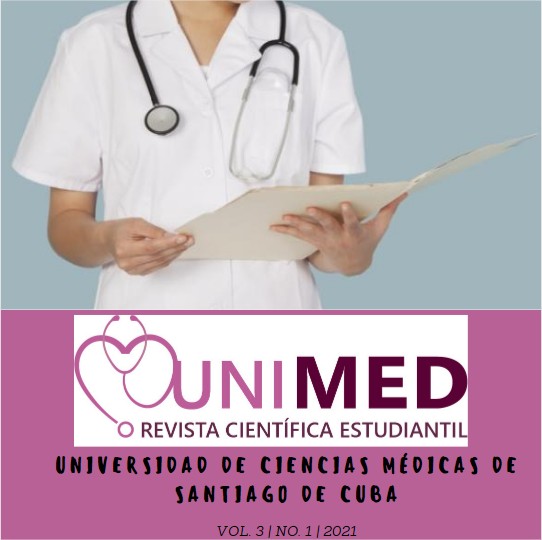Electrotherapy. A therapeutic alternative in corneal ulcer
Keywords:
Electrotherapy, Electrical stimulation in corneal ulcer healing, Corneal ulcerAbstract
Introduction: The treatment of corneal ulcers constitutes today a very important health problem to be solved, for this reason the need arises to search for therapeutic alternatives that open new horizons for these patients. Taking into account the insufficient information related to electrotherapy as a therapeutic alternative for corneal ulcers, this work was carried out.
Objective: characterizing patients with corneal ulcer, treated with electrotherapy.
Methods: A descriptive, longitudinal and prospective study of 128 patients who were diagnosed with corneal ulcer was carried out, in the Hospital “Saturnino Lora” of Santiago de Cuba, in the period understood since January 2019 until September of 2020.
Results: Post-treatment visual acuity between 05 and vision unit predominated in patients treated with conventional treatment plus electrical therapy. The representative complication was corneal leukoma with 31,25 % in the conventional treatment group. The 100% of patients treated with electrotherapy between day 14 and 20 were cured. 100% of the patients evolved satisfactorily with the combined treatment with drugs and electrical therapy.
Conclusions: electrotherapy is obviously a therapeutic alternative in the treatment of corneal ulcer, by enhancing and fortifying drug treatment.Downloads
Downloads
Published
How to Cite
Issue
Section
License
Los autores/as que publiquen en la revista UNIMED mantienen sus derechos de autor y ceden los derechos de publicación a la revista, su artículo estará simultáneamente sujeto a la Licencia de reconocimiento de Creative Commons (CC-BY-NC 4.0)
Los autores/as no ceden los derechos patrimoniales a la revista UNIMED, ni transfieren sus derechos de autor al editor.
Se permite y recomienda a los autores/as difundir su obra a través de Internet (p. ej.: en archivos telemáticos institucionales o en su página web) antes y durante el proceso de envío, lo cual puede producir intercambios interesantes y aumentar las citas de la obra publicada.
De igual manera podrán establecer acuerdos adicionales para la distribución no exclusiva de la versión de la obra publicada en la revista (por ejemplo, situarlo en un repositorio institucional o publicarlo en un libro), con el reconocimiento de haber sido publicado primero en esta revista.











